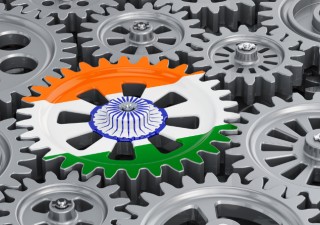Divisional Patent Applications
19 November 2012

In India it is possible to file one or more divisional patent applications based on the main (parent) application. Indian Patent Law, as per article 4G of the Paris Convention, has a provision for divisional patent application outlined in Section 16 of the Indian Patents Act 1970, as amended.
Need or Strategy
During the prosecution of the application, the controller may raise the objection on the ground that the claims of the complete specification relate to more than one invention, similar to the “restriction requirement” or lack of unity of invention under 35 USC. 121 in the United States. The applicant may argue and submit that as per Section 10(5), the claims of a complete specification relate to either a single invention or a group of inventions so linked so as to form a single inventive concept. However, to remedy such objection, applicants often choose to file single or multiple divisional applications.
Besides such need to meet the official objection, applicants can also file a divisional application under Section 16. In India the prosecution period is rigid and all the official requirements as per Section 21(1) must be met within one year from the date of issuance of the first examination report (FER). Such period is not extendable and, on failure to comply with the official requirements within the stipulated period, the application is deemed to be abandoned. It may be noted that there is a significant bearing on the decision with respect to the grant of a patent in view of the decisions of other patent offices such as the USPTO, EPO, or other major patent offices.
Prosecution in other patent offices may be lengthy or may take place at a later period. Where an applicant is expecting to have a favourable outcome at such patent offices which eventually will have positive influence on the grant of the patent or certain set of claims, to keep a corresponding patent application pending before the Indian Patent office, a divisional application may be filed. However, the division of claims which may be allowed to lapse in the parent application and those which may be required to be kept pending needs to be carved out, keeping in mind the bar to certain kinds of inventions and claims in India. Section 2(1)(j) will bar the “use” type claims in India, and Section 3, which sets out 15 types of criteria not considered as an invention, would bar the patentability of inventions or claims in India which may be allowed in other countries.
Contents of the Divisional Patent Application
To file a divisional application, one must file a complete specification and not a provisional one. A specification in respect of a divisional application under Section 16 should include specific reference to the number of the original application from which the divisional application is made. The complete specification should not include matter not in substance disclosed in the provisional or complete specification already filed in respect of the first mentioned application. In absence of specific reference to claims in Section 16(2) and as already indicated above, the divisional application which customarily includes a sub-set of claims from the parent application, it may also contain new set of claims, which would be disclosed and supported in the specification of the parent application.
As per Section 16(3), the applicant, as directed by the Controller, may be required to amend the complete specification of either the original or the further divisional application as may be necessary to ensure that neither of the complete specifications includes a claim for any matter claimed in the other, that is to say, to avoid double patenting.
When to File
As per Section 16(1) a divisional patent application may be filed any time before the grant of the patent. When an applicant wishes to file a divisional patent application voluntarily, it may be filed even before the prosecution starts. When a divisional application is filed in response to the official objection, it will ideally be filed around the period of submission of the response to the first examination report.
Prosecution
According to the Section 16(3), the request for examination for a divisional patent application should be filed with the patent office within 48 months from the date of filing of the application or from the date of priority of the first mentioned application or within six months from the date of filing of a divisional application, whichever is later. This gives an avenue to the applicant, if desired, to delay the prosecution. Request for divisional application should be filed only after filing request for the parent application to ensure the requirement of section 16(3).
Renewal
Unlike the Patent of Addition where no renewal fees are to be paid, divisional patent is an independent to the parent patent and hence renewal fees are required to be paid every year to keep it in force.
Term
The date of filing of the divisional patent application gets antedated, as per the filing date of the first parent application. Such antedating thus does not allow ever-greening of patents in India even after filing multiple patent applications based on a parent application. The divisional patent application will lapse with the parent application and thus in effect may have a shorter term from the grant date.
Krishna & Saurastri
K.K. Chambers, 1st Floor,
Sir P.T. Marg, Fort,
Mumbai 400 001, India
T: +91 22 2200 6322
F: +91 22 2200 6326
E: info@krishnaandsaurastri.com
W: www.krishnaandsaurastri.com






